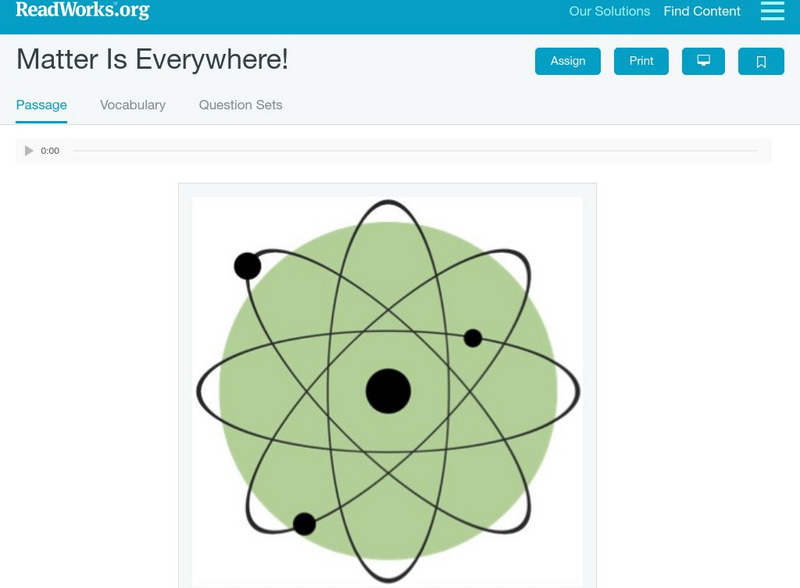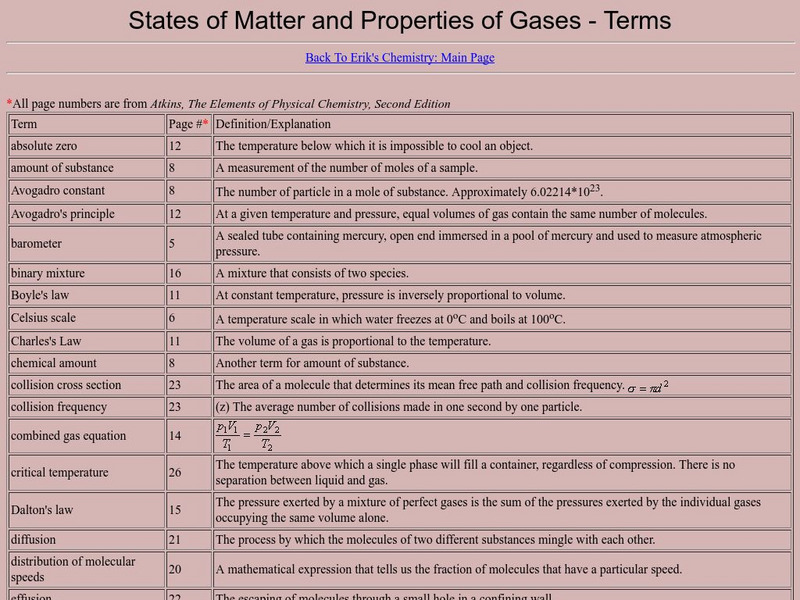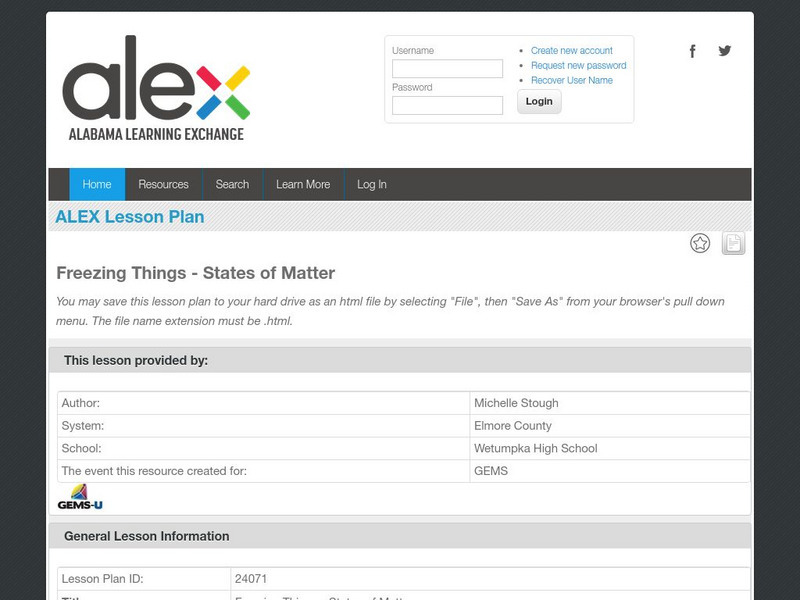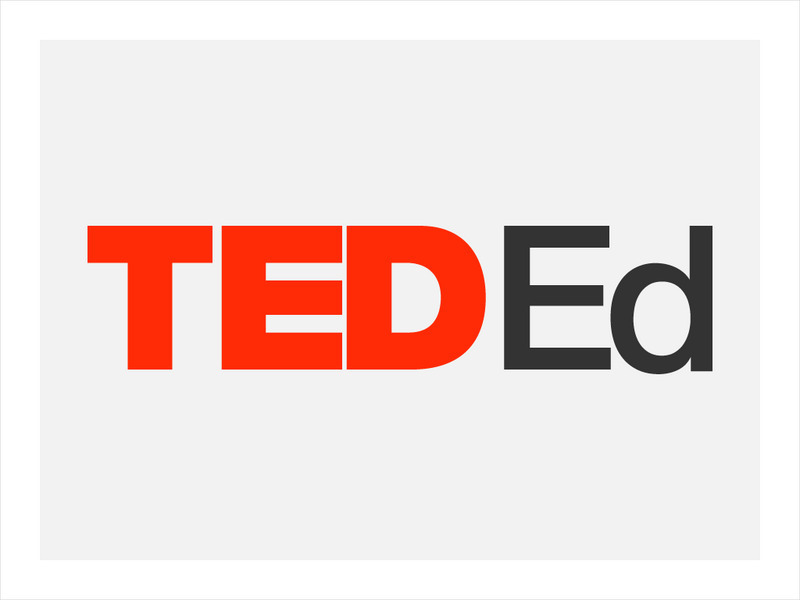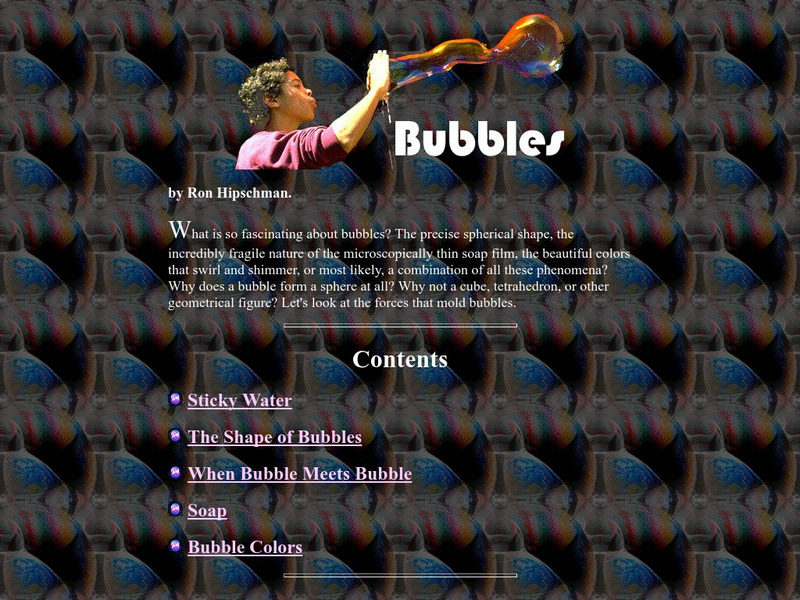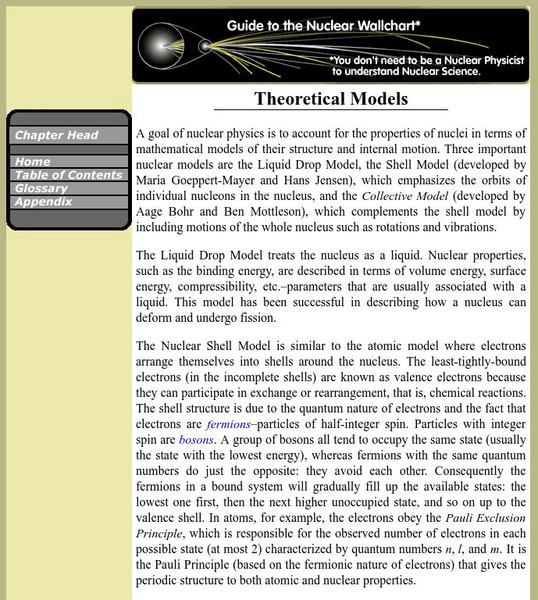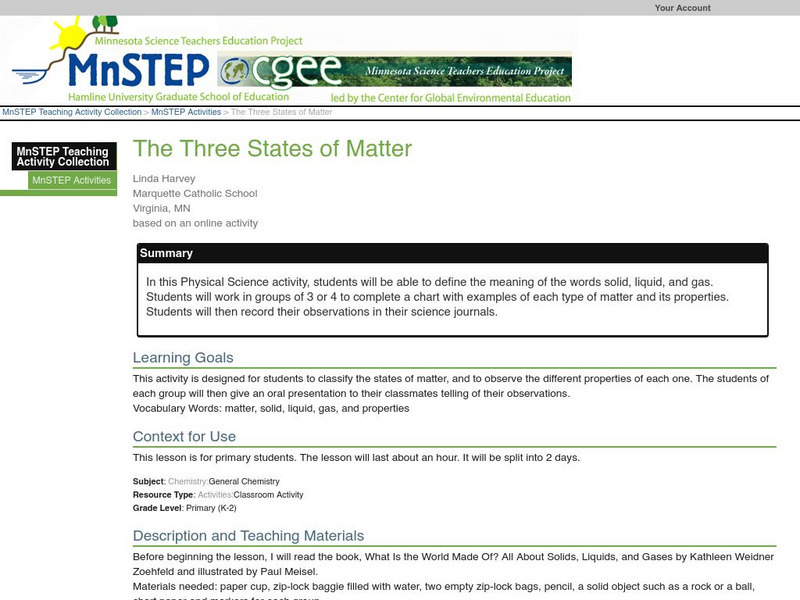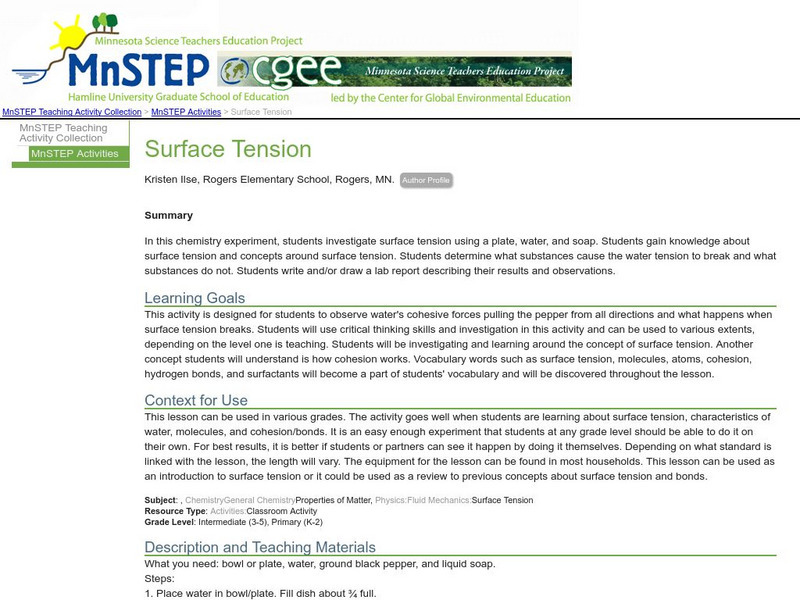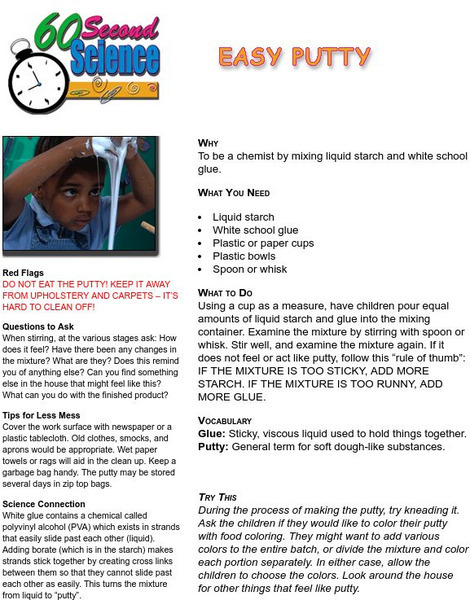Web Elements
Web Elements Periodic Table: Bromine
An excellent site with a vast amount of information on bromine and its properties.
University of Florida
Chem. 2041 Lecture Notes: The Forces Between Molecules
A discussion of the variety of forces which hold molecules together. The relative strengths of these forces for the various states of matter is discussed. The effect of such forces on the boiling points and other phase change...
Other
Siemens Science Day: Earth Science: By All Indications
A hands-on science experiment where students test acidity levels by using red cabbage extract and learn the acid levels of known and unknown liquids.
Read Works
Read Works: Matter Is Everywhere!
[Free Registration/Login Required] An informational text about mass and its properties. A question sheet is available to help students build skills in reading comprehension.
Other
States of Matter and Properties of Gases: Terms
A very complete list of terms that are important to the study of gases. This resource is a web archive.
McREL International
Mc Rel: Whelmer #64 Learning Activity: Liquid Rainbow
An easy to do activity that investigates density and solubility. The activity is presented in lesson plan format that meets NSES standards.
Concord Consortium
Concord Consortium: What Makes Water Special?
Activity 2 investigates Why is water different from other liquids? This activity will discover the properties of different liquids. Students will explore what makes honey gooey and thicker than water. And why some liquids evaporate...
Concord Consortium
Concord Consortium: What Makes Water Special?
Students will develop explanations connecting observations of water with properties that water exhibits through the following activities. Activity 1 How are water and other liquids similar? Activity 2 Why is water different from other...
Alabama Learning Exchange
Alex: Freezing Things: States of Matter
The class will go back over the Power Point presentation on chemical and physical properties. The teacher will then conduct numerous liquid nitrogen demos. This lesson is used early in the Chemistry course. The students love it. This...
PBS
Pbs Learning Media: The Ruff Ruffman Show: Teacher's Guide: Kitchen Chemistry
Learn about kitchen chemistry alongside Ruff Ruffman. Students can use the videos, games, and activities from The Ruff Ruffman Show to discover how by investigating solids and liquids and exploring heating and cooling, science can help...
Energy4Me
Energy4me: Understanding Density
This activity explores the property of density in a variety of liquids and solids.
Science Education Resource Center at Carleton College
Serc: Polymers & Plastics: Classification & Models
Students will use their prior knowledge about changes of matter including physical and chemical changes to examine and categorize various types of plastics (polymers). They will identify how their chemical properties allow them to have...
TED Talks
Ted: Ted Ed: Why Does Ice Float in Water?
Ever wonder why solid ice floats in liquid water? In this video lecture you will explore the special properties of water. Learn "the science behind how hydrogen bonds keep the ice in your glass (and the polar ice caps) afloat". At the...
Exploratorium
Exploratorium: Soap Bubbles
A scientific look at soap bubbles. Find out what it is about soap and water that allows bubbles to occur, how bubbles stick to each other, and why they are always a sphere. There are even formulae for making your own bubble solution.
Scholastic
Scholastic: Study Jams! Science: Matter: Periodic Table
A video and a short quiz on the periodic table of elements and how it is organized.
Oklahoma State University
Oklahoma State University: Chem 1215: Periodic Table
Explains different sections of the periodic table, and how they are used.
Other
King's Centre for Visualization in Science: Scientific Models
A series of interactive applets use scientific models to teach some basic concepts of matter, including states of matter and physical and chemical changes.
Lawrence Berkeley National Laboratory
Berkeley Lab: Theoretical Models
Resource explores three important nuclear models: Liquid Drop Model, Nuclear Shell Model, and Collective Model.
ClassFlow
Class Flow: Gases Around Us
[Free Registration/Login Required] Through this unit children learn that gases are materials and can be distinguished from solids and liquids by their properties. They also learn about the uses of some important gases and where gases can...
Science Education Resource Center at Carleton College
Serc: The Three States of Matter
In this Physical Science exploration activity, students explore the meaning of the words solid, liquid, and gas. Student groups complete a chart with examples of each type of matter and its properties and then record their observations...
Simon Fraser University
Chem1 Virtual Textbook: Densities of Substances and Materials
As part of a larger site called "Getting started in Chemistry," this site examines various topics related to the densities of substances and materials. Included in the study are properties of solids, liquids and gases, and how density is...
ClassFlow
Class Flow: Matter 2nd Grade
[Free Registration/Login Required] Interactive flipchart teaching the states of matter for a 2nd grade classroom containing four topics with several lessons in each one. The topics covered are: matter, solids, liquids, and gases....
Science Education Resource Center at Carleton College
Serc: Mn Step: Surface Tension
A simple experiment investigating surface tension and the cohesive property of water, using just water, pepper, and liquid soap.
Other
60 Second Science: Easy Putty
Explore the properties of colloids while making putty. Discover how some mixtures can display properties of both solids and liquids.





